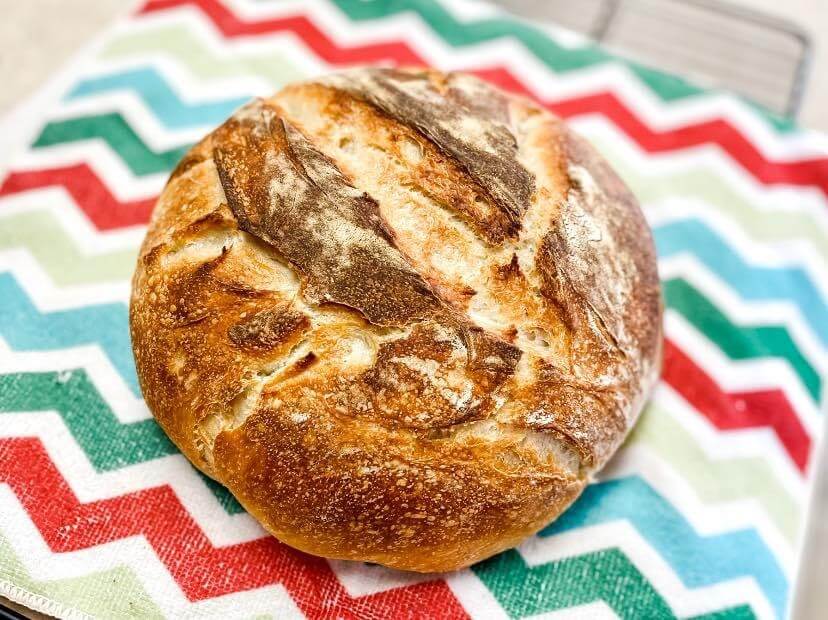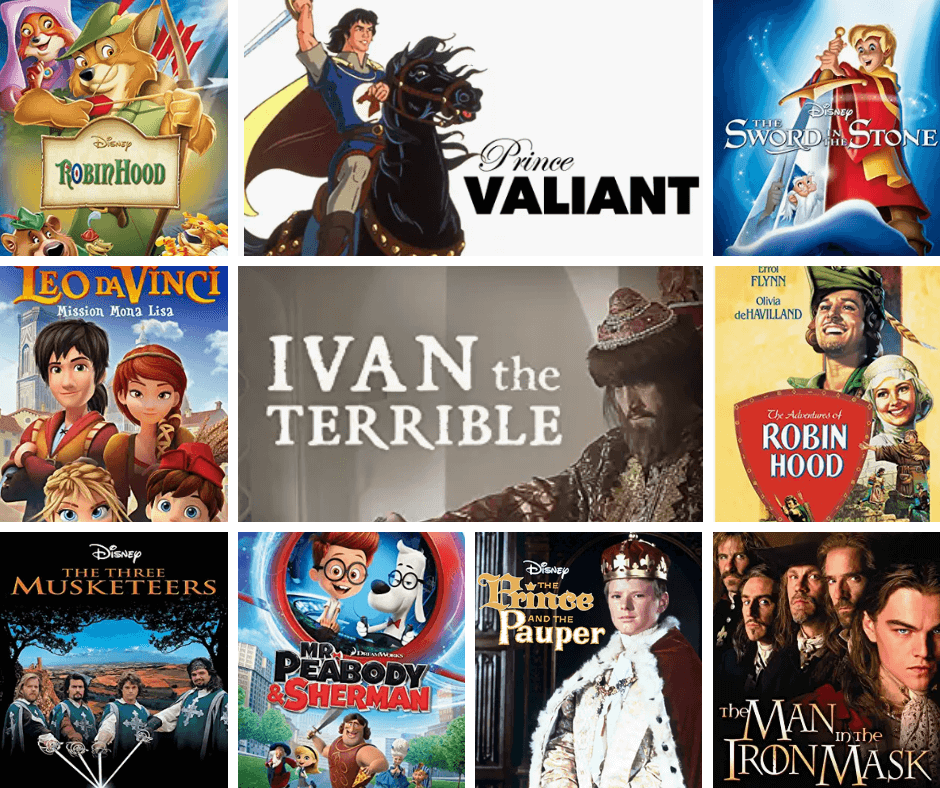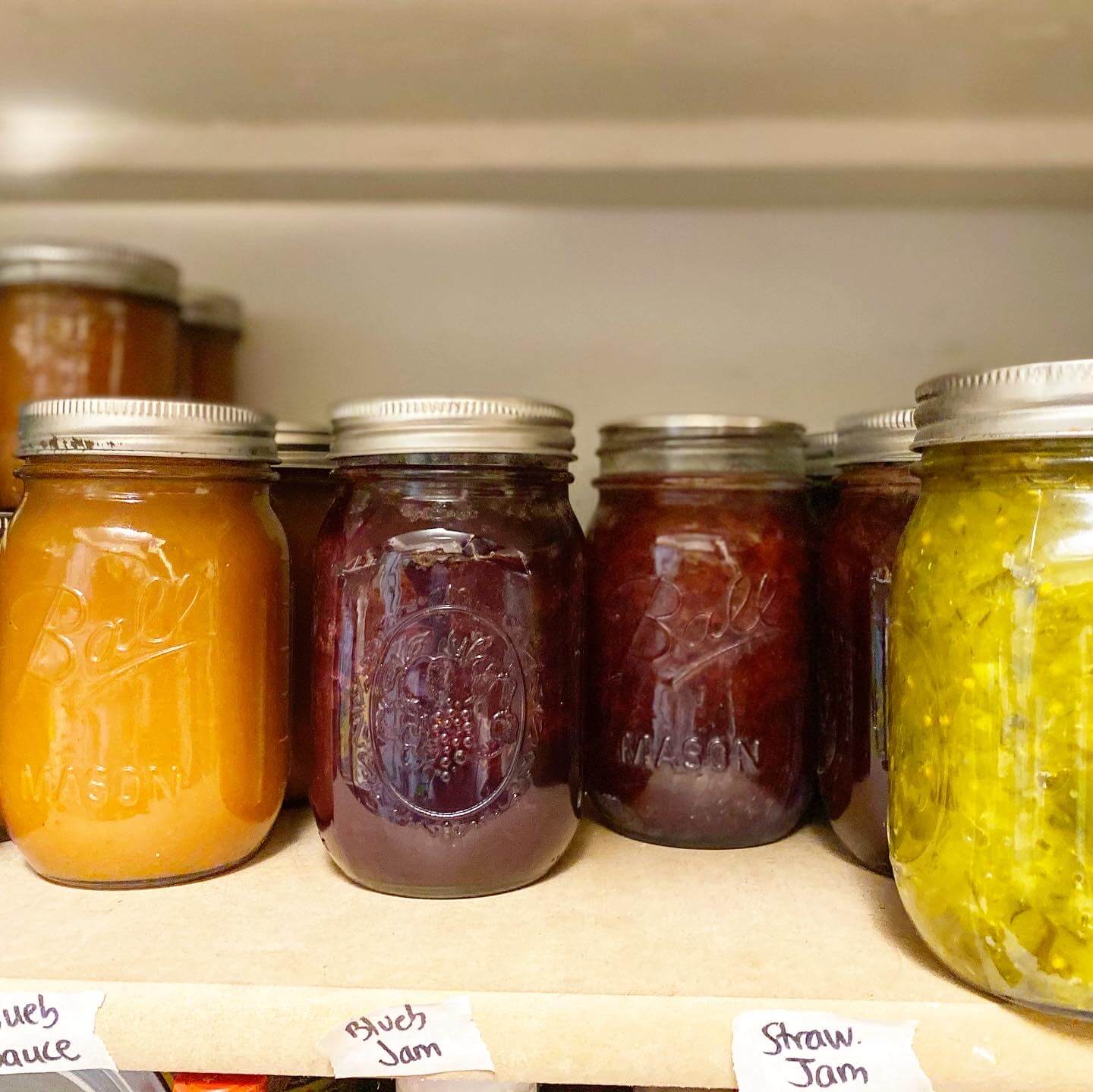 This morning we visited the Maubane children’s church.
This morning we visited the Maubane children’s church.
Pastor Norman started this church with a small idea that quickly grew into 400 children attending every week! He is now the overseer of the community center in this village of about 15,000 people who live in poverty.
What I love about this community center and Take Action’s vision is that the locals are being equipped and empowered to show Jesus to other locals. Locals are developing a sustainable church.
They warned us that the children at the Maubane Community Center would need to be loved on. They don’t have much touch or cuddling in their homes, if any at all, so no matter how out of our comfort zone it felt, we were asked hug them, touch them, and love on them.
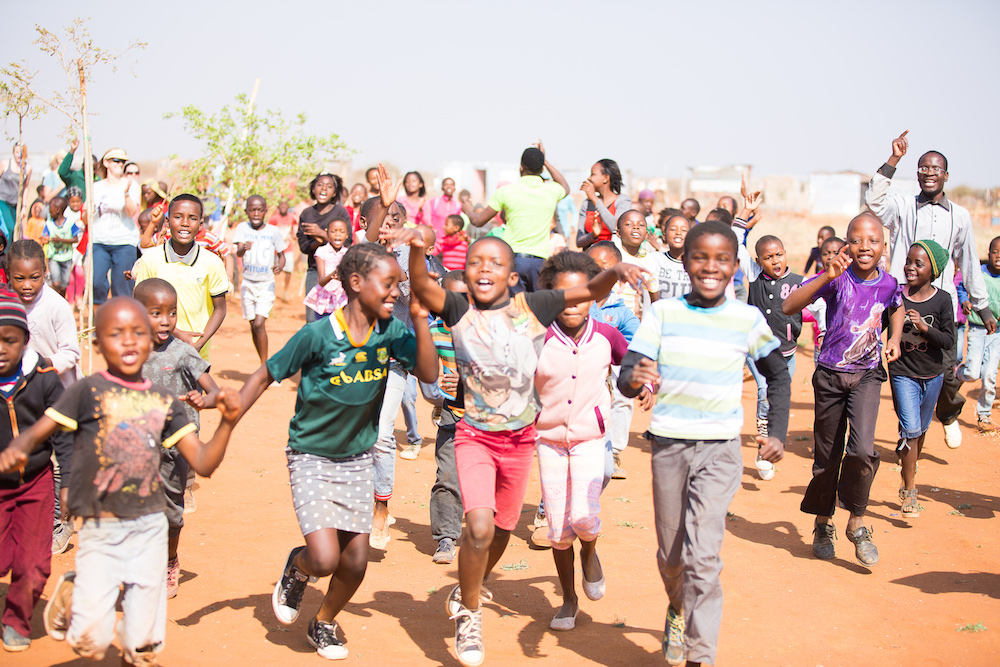
As soon as we arrived and walked through the gates, we were swarmed with hugs and children running and grabbing our legs. The one child hugged me so strong, I first thought she was going to knock me over and then I wasn’t sure if she was ever going to let go. Folks, the emotions are so strong when this happens. I became a flood of tears, completely unexpectedly! “Do-may-la” I said again and again—which means “hello, how are you?”
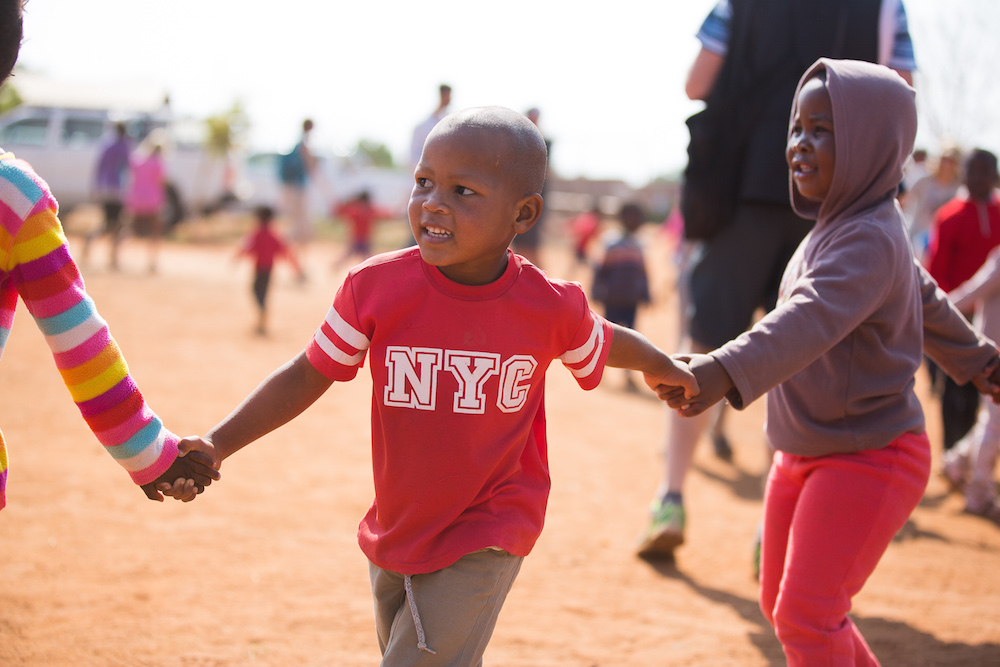
We marched around waving our arms, singing, making a train and doing chants. Then the group divided into smaller groups by age. This was the story time and also when we began to hand out the pooridge, clementines, and juice boxes.
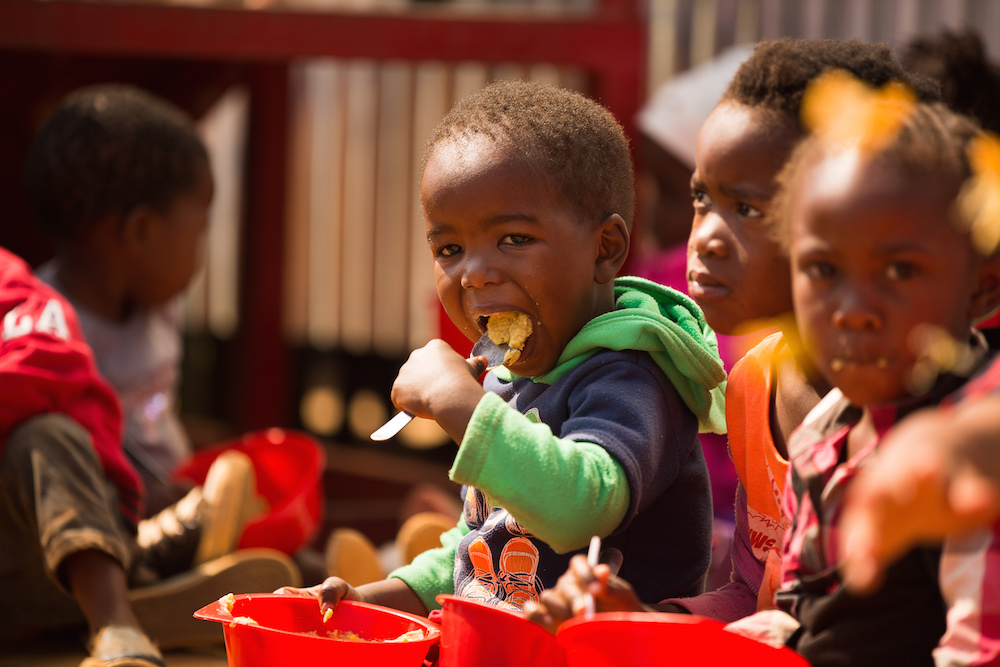
At first I was surprised there wasn’t more Bible teaching and story time. But as I reflected on it more and more, and thought about the discussion we had on the way there with our driver about what the church really looks like, I realized they are showing the people Jesus by loving them, worshipping with them, and feeding them.
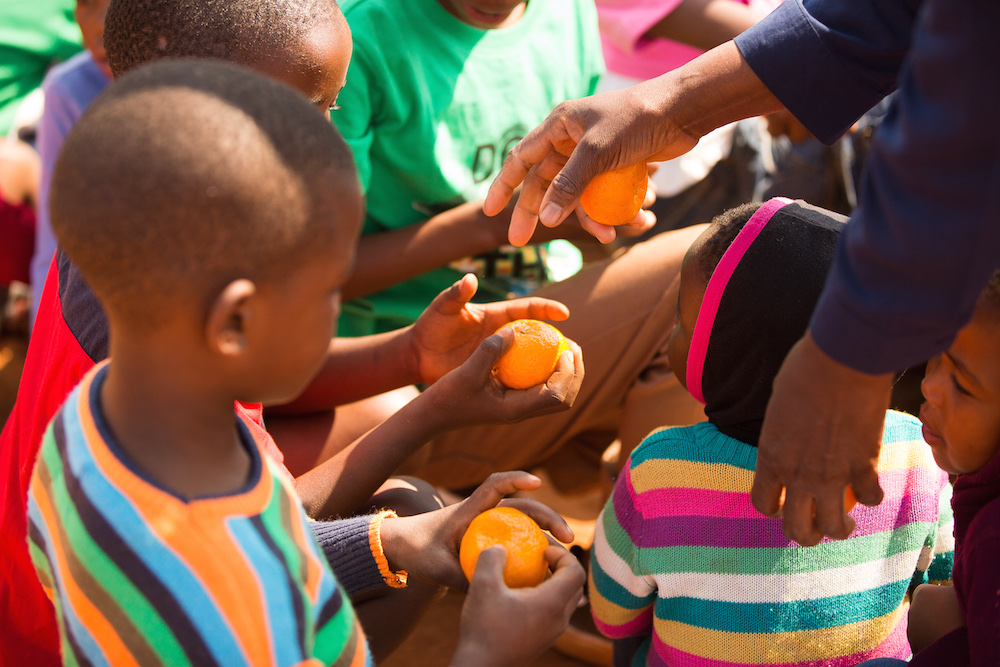
These kids wouldn’t have any breakfast without this meal. It still amazes me that everyone in the community doesn’t show up for the free food. But I guess it goes to show how strong the witchcraft and other religions are to them. When I asked if they would eat anything all day, I was told that they would probably have ‘pop’ for dinner. I thought they meant soda!! But ‘pop’ (actually spelled ‘pap’) is their word for pooridge. 
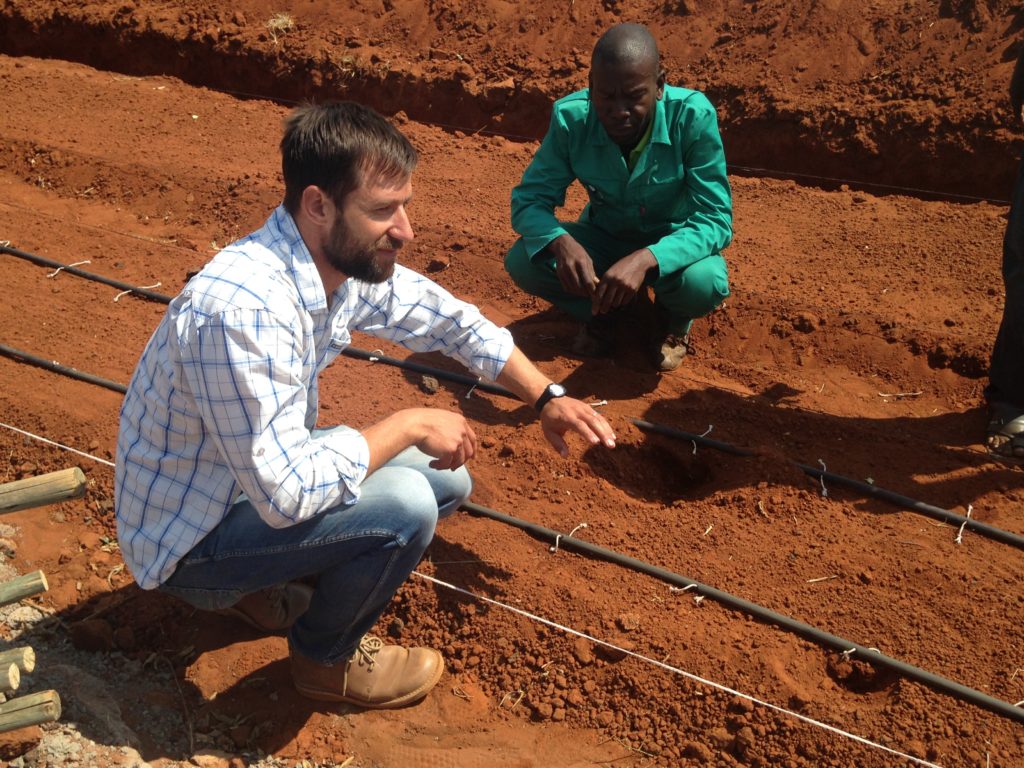
South Africa Drip Irrigation Systems
After the kids were fed, Dawid (pronounced “dah-vid”) and “Em-Poh”, showed us the agriculture progress. Dawid does not have an agricultural background but he has a heart and a vision to use agriculture to show people the gospel. (He is a white South African.) This guy is authentic! I wish each and every one of you reading this could hear his heart in person.
He started training “Em-Poh” only a few months ago in gardening, and today he had “Em-Poh” share with us everything they are doing. I love Dawid’s vision to find someone who is excited about learning, latch on to them, and then equip them to do the work, in order to create sustainability. Dawid could have shared the details with us, but instead he had “Em-Poh” do all the talking!
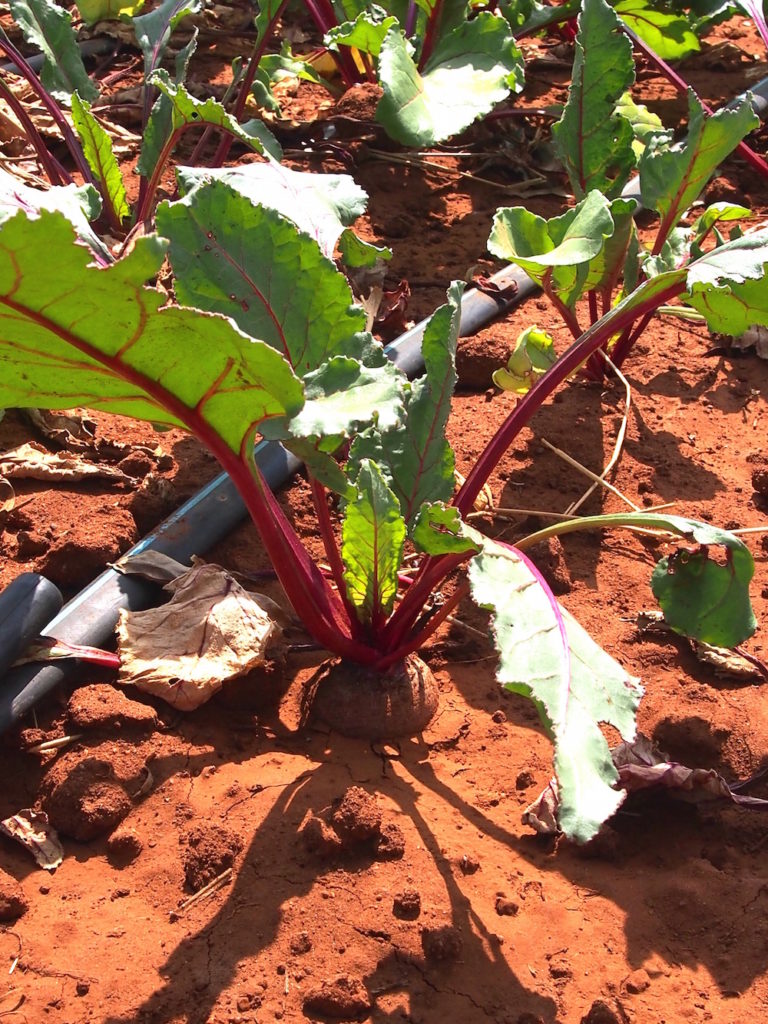
Dawid shows the people that if we are faithful nature is sustainable. If we take care of the land, add the nutrients it needs, it will produce a crop. If we look after the soil it will look after our plants. This teaches the locals that it is hard work but it pays off.
[perfectpullquote align=”full” cite=”” link=”” color=”” class=”” size=””]If we are lazy there is no reward, but faithfulness is rewarded.[/perfectpullquote]
Dawid takes a mentorship approach versus a classroom approach. Before he started teaching them, he planted dozens of spinach plants in his own backyard to learn how to do it. As he learned, he taught them what he was learning. He walks alongside them, but does not do the work for them. It is a process, just like discipleship is a process.

So how do they get started? If they get 100 people interested in farming, they work to narrow it down to about 20 who will be dedicated and show commitment. That way they only invest their time and teaching to the 20 who are ready to commit. By weening the others out, Dawid feels that the other 80 will be reached—as they see the lives changed of the 20 who committed.
Here is a little example. When Dawid started with “Em-Poh” he had “Em-Poh” buy some seeds from him. Because if you give, the culture is such that they expect to be given to again. “Em-Poh” planted the seeds, cultivated them and they grew. Dawid taught “Em-Poh” how to harvest the plants and save seeds. Now “Em-Poh” sells seeds to the locals. Do you see the circle? How they are becoming a sustainable society that will eliminate poverty?
As Dawid is training these locals in agriculture, he is also discipling them. He can begin discussions like,
[perfectpullquote align=”full” cite=”” link=”” color=”” class=”” size=””]“If we are doing agriculture God’s way, then how about doing marriage God’s way?”[/perfectpullquote]
Did his wisdom hit you as hard as it hit me? How exciting it is for me to see this in action, in first-person here in South Africa! Talk about being a part of something more! Something big! But it does take time. It is a process.
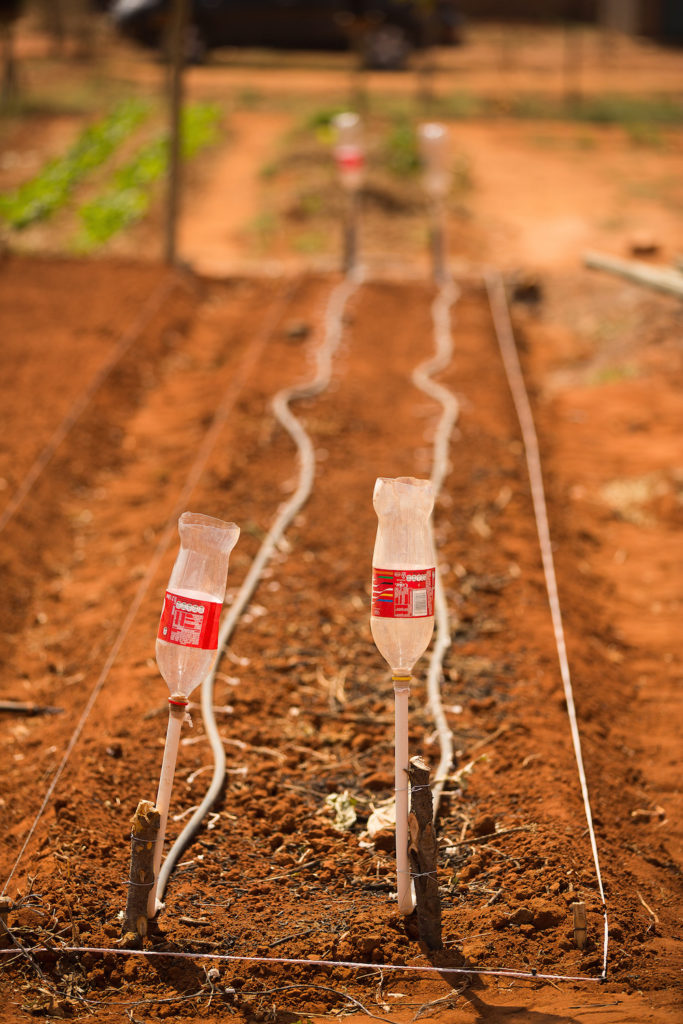
Preparing the Ground for Tomatoes
First, they have to dig a ditch. This ditch is 15m long and takes at least a day to dig. Many locals drop out at this point, as this seems an impossible task. But again, I love Dawid’s wisdom. What is his response? He tells them . . .
[perfectpullquote align=”full” cite=”” link=”” color=”” class=”” size=””]”work for only a half hour every morning while you are strongest and can get the most work done, and soon your job will be done!”[/perfectpullquote]
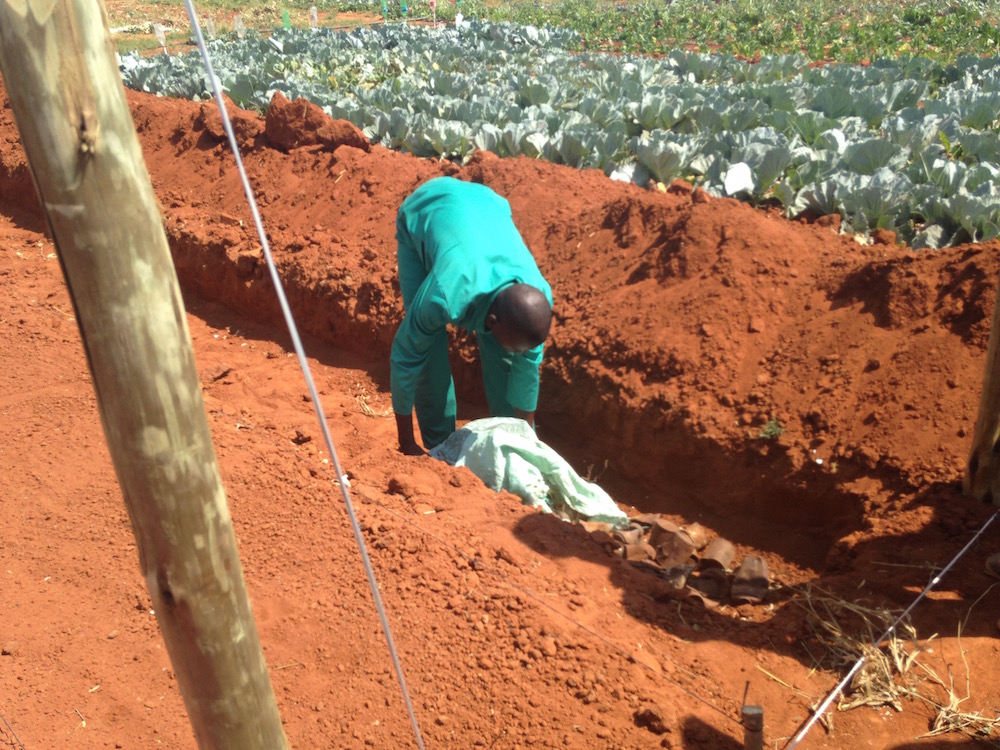
Once the ditch is dug, they pour out old tin cans to cover the bottom. Remember we are preparing the soil for tomatoes, and tomatoes need iron.
 Then they layer wet and dry grass. The wet helps with the dryness of the region, adding a little moisture to the soil.
Then they layer wet and dry grass. The wet helps with the dryness of the region, adding a little moisture to the soil.
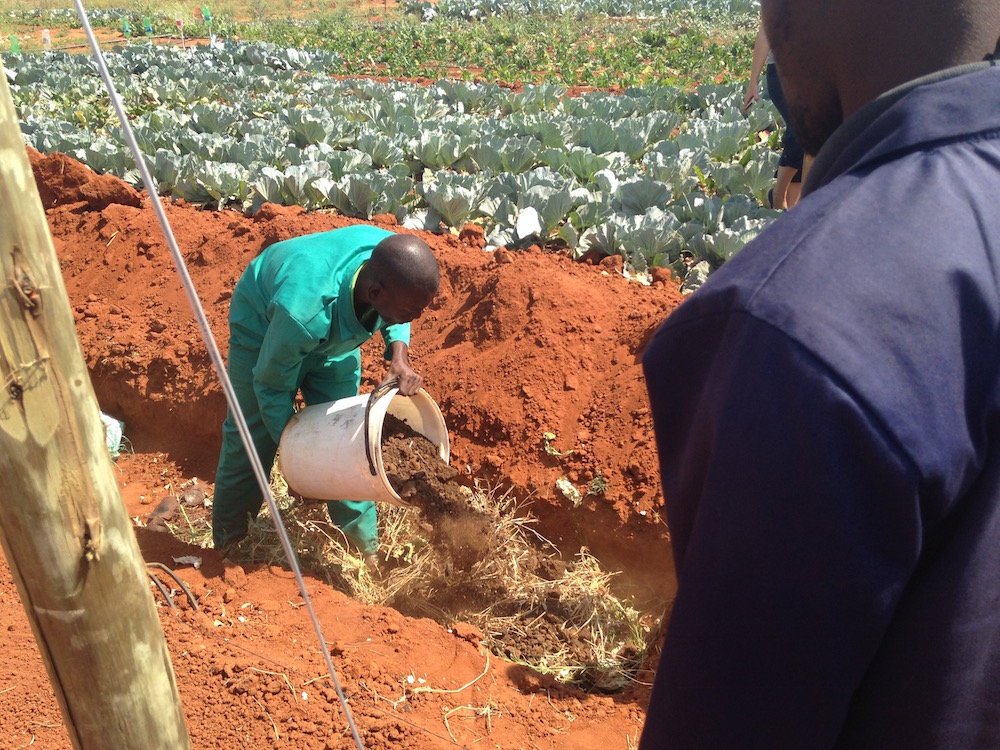 Followed by a layer of chicken manure and cow manure. “Em-Poh” fluffs it with a fork and then puts some of the red soil on top.
Followed by a layer of chicken manure and cow manure. “Em-Poh” fluffs it with a fork and then puts some of the red soil on top.
 Then they add another layer of wet grass, dry grass, manure and red soil. With proper watering (about 5 liters a day through a special drip irrigation system), this soil should last 3-4 years before they would need to dig the ditch again.
Then they add another layer of wet grass, dry grass, manure and red soil. With proper watering (about 5 liters a day through a special drip irrigation system), this soil should last 3-4 years before they would need to dig the ditch again.
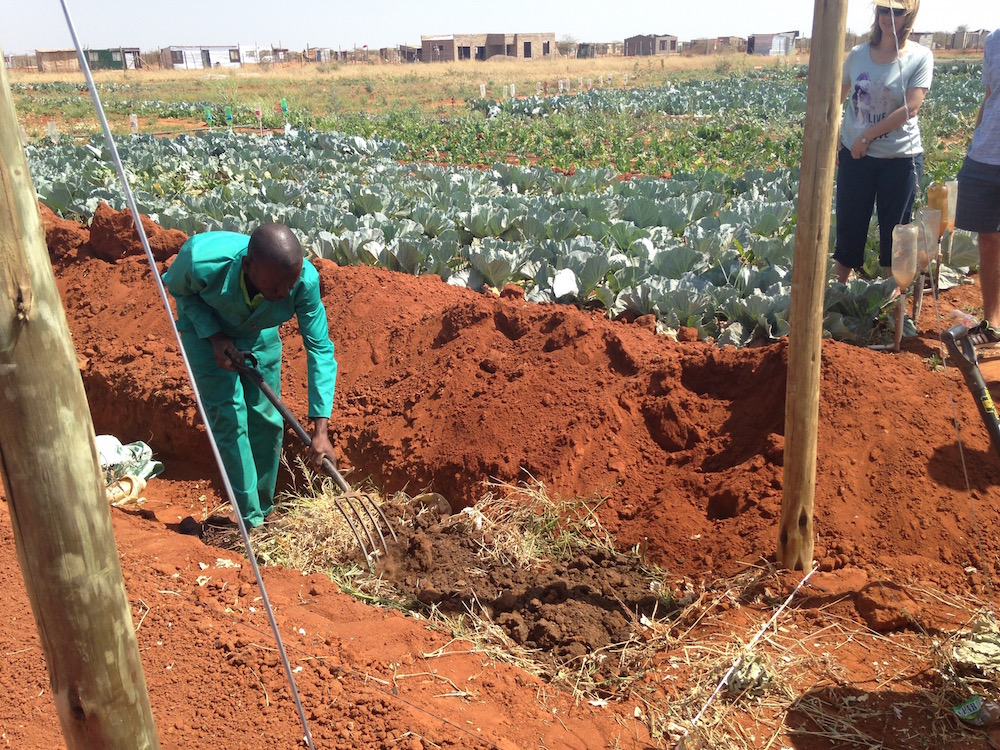 Tomorrow we will revisit Maubane with a more in-depth tour of the community center and children’s school that is starting. We’ll also be visiting the distribution center that receives all the donations from the local grocery stores (things that have met their sell-by-date).
Tomorrow we will revisit Maubane with a more in-depth tour of the community center and children’s school that is starting. We’ll also be visiting the distribution center that receives all the donations from the local grocery stores (things that have met their sell-by-date).
_____
We were very blessed to have Kyle Shultz, a professional photographer, as part of our South Africa Advocacy Team. A special thanks to him for many of these photos! Please visit his online photo school where he teaches parents to take photos that leave a legacy.

Are you signed up for my South Africa Advocacy Trip Newsletter?
I have returned home from my trip, but I will still be sending updates about being an advocate and about the work God is doing in South Africa. I also plan to share some unique stories and photos with this email list, that will not be shared on the blog. Please sign up and follow along!
Other articles about South Africa:
My South African Chakalaka Recipe
The Day I Met Crystal Paine
I am Going to South Africa!!
How Going to South Africa Impacted Me (on Money Saving Mom)
7 Answers About My South Africa Advocacy Trip (Part 1)
Where South Africa Left an Impact on My Heart (Part 2)
South Africa Church, Prayer and The Hardest Thing For Me To Understand (Part 3)
